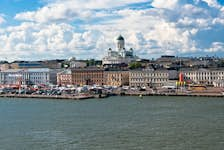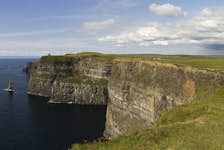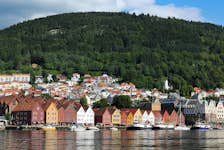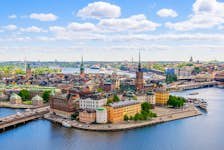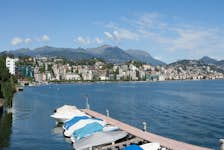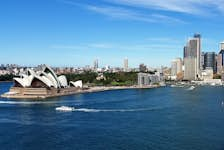Study in Serbia
Higher education system has two types of studies:
- Academic studies organized at universities, and
- Applied profession-oriented studies organized either at colleges of applied studies or at universities.
Universities are independent higher education institutions that may offer all types and levels of study courses. Universities consist of individual faculties. In order to obtain accreditation universities have to offer all levels of study courses at least in three areas of studies.
Colleges are independent higher education institutions that offer basic, specialist and master’s degree courses in one or more areas. There are two types of colleges:
- Colleges of Academic Studies – offering academic courses
- Colleges of Applied Studies – offering applied study courses.
Find the best information about what it’s like to study in Belgrade, including degree course offers, career opportunities, student life, living costs, and more.
General application requirements
Basic requirement to enter Bachelor and integrated study programmes is the completion of a four-year secondary education and passing the entrance exam. Specific admission pre-requisites usually entail the specific knowledge in certain disciplines and should be checked for the particular program a student is interested in.
Entrance exams are usually held in early July and early September. The ranking of candidates depends on both the entrance exam and the success from the previous level of education.
Applicants need to go through a process of recognition of their study credentials. Candidates should submit the following documentation to the higher education institution:
- request form
- proof of payment of expenses
- two certified photocopies of a foreign higher education document
- two copies of translation of the foreign higher education document into the Serbian language
- two copies of diploma supplement or course record transcript
- two copies of the translation of the document
- two copies of a decision by the authorized body on name and/or surname change for persons who have changed their name
Admission to a Master programme is permitted after the successful completion of a Bachelor programme in a related subject. Admission to a Doctoral programme is permitted after the successful completion of a Master programme.
Higher education institutions determine specific programme application requirements. Contact the student admission department for detailed information.
For more information visit: http://www.studyinserbia.rs/en/cms/study-in-serbia/recognition-of-foreign-degrees
Degrees offered
The three-cycle system of academic studies includes:
- Basic academic studies (Bachelor), lasting 3-4 years
- Master studies, lasting 1-2 years
- Doctoral studies (PhD) with a minimum of three years of study
In the field of medical science (the studies of medicine, dentistry and veterinary medicine), studies are organized through integrated studies that last 6 years.
Vocational studies comprise of two levels:
- Basic applied studies, lasting three years
- Specialized applied studies, lasting one year
Language
The main language of instruction is Serbian for all educational levels. There are also English-taught study programmes. In many universities and colleges, there are additional benefits for foreign exchange students, such as organizing consultations with professors in English, etc.
Study visa
Visa applications should be submitted to the student’s local Embassy or Consulate of the Republic of Serbia. General visa requirements:
- Valid passport (passport must be valid at least 90 days from issue date of visa)
- Letter of invitation from the university that the student enrolled in
- Completed visa application form
- Photo (size 3.5x4.5cm)
- Return ticket or Itinerary
- Proof of sufficient funds for staying in Serbia
- Health insurance
- Visa fee
English language preparation for studying in Serbia
Develop your academic English language skills in order to meet the English language requirements at Serbian universities offering degree studies for international students. Choose an English language school anywhere in the world and pick your preferred English exam preparation course from diverse language course options.
Living in Serbia
- Higher education institutions determine programme tuition fees. These usually cost 500 EUR to 2500 EUR per year.
- All university towns also have a lot of rental apartments and rooms for students. Prices vary from 50 EUR for a shared room to over 220 EUR for an apartment in the city.
- Monthly living costs range from 330 to 550 EUR/month.
- There are 16 sports centres, 7 sports halls, 7 stadiums and 6 swimming pools in the capital city of Serbia, Belgrade.
- Belgrade is a frequent host to European and World cups and championships in basketball, handball, water polo and volleyball.
- The Belgrade Fortress is a museum of the history of Belgrade, a place where you can literally observe the passage of time. The Fortress was built in stages, during the lengthy period between the 1st and 18th century.
- Located in the heart of the city, the Belgrade Zoo, also known as the Garden of Hope, is located in one of the most attractive locations in the city – Kalemegdan Park.
- Discover cultural remnants of the Roman era, explore the hideaways of long-ago Emperors, and wander through exquisite Romanesque-Byzantine monasteries.
- Serbian villages are ecological oases; free from the pollution of modern civilisation.
- A traditional welcome to a Serbian village house involves the serving of bite-sized pieces of warm homemade bread dipped in salt.
- In contrast to the rest of Europe, there is no single day of the week in Serbia when you cannot have a night out.
- Foreign students can eat in students' restaurants for as much as 4 EUR.
- Serbia has a strong network of libraries: three national libraries, 689 public libraries, 143 higher education libraries and 11 non-specialized libraries.
About Serbia
Serbia is located in the central part of the Balkan Peninsula, in the south-eastern part of Europe.
Serbia borders Hungary to the north, Romania and Bulgaria to the east, Macedonia to the south, and Croatia, Bosnia, and Montenegro to the west.
The official language is Serbian and official alphabet is Cyrillic as well as Latin. In the areas inhabited by national minorities, the languages and alphabets of the minorities are in official use, as provided by law. The majority of the population of Serbia are Serbs (66 per cent), but another 37 nationalities also live on its territory (Albanians 17 per cent, Hungarians 3.5 per cent, followed by Romanians, Croats, Bulgarians and others). All citizens have equal rights and responsibilities and enjoy full national equality.
Serbia has a temperate continental climate, with a gradual transition between the four seasons of the year (warm summers, with temperature up to 30°C and snowy winters, with temperature from - 5°C to 10°C).
Serbia has always straddled East and West, not only in a geographical sense, but also politically and culturally. At first, Serbia found itself between the Byzantine and Roman empires, than it became a frontier between the Ottoman Empire and the Christian West. The Byzantine Empire had a great influence on the Serbian culture. Roots to the Serbian education system date back to 11th and 12th centuries when first Catholic colleges were founded in Vojvodina(Titel, Bac). Medieval Serbian education however was mostly conducted through the Serbian Orthodox Monasteries.
This centuries-long position in the path of conquering armies from both sides has led to constant migrations and the mixing of populations. The result is a multi-ethnic, multicultural and multi-confessional society in Serbia. During communism the inhabitants of this region were somewhere between the Warsaw Pact and NATO. In contrast to other post-communist countries in the region, the people of Serbia have a more comprehensive education, a more contemporary approach to life, better knowledge of foreign languages and more readily accept new technologies and behaviours.
Belgrade (Beograd), is the capital of the country, with a population of 1.6 million people, is the administrative, economic and cultural heart of Serbia.
Currency of the Republic of Serbia is Serbian dinar (RSD).
Universities, colleges and schools in Serbia
Belgrade
- University of Belgrade (3 PhDs)
Interested in scholarships for Serbia? Check out our scholarship search page.
How to Apply to a Master's in Serbia
If you've decided to study a Master's degree at a university in Serbia, you will have to gather the right documents to prove that you fit the university requirements. Provide complete personal information, previous qualifications, financial information, and a personal statement.
What documents do I need to provide to apply in Serbia?
To apply to a university in Serbia you will likely be asked to provide some of the following documents:
- birth certificate;
- recent photos;
- your passport or national identity card;
- one or more reference letters from past employers or teachers;
- copies of past diplomas or certificates, including your graduated Bachelor's degree;
- academic transcripts;
- letter of intent;
- Curriculum Vitae;
- Some form of proof that you can support your stay in the country during your studies.
Depending on the subject or specialization of your chosen Master's, you might also be asked to provide scores for additional tests like the GRE, GMAT or LSAT. Check if your programme requires any of these, or others.
The list of documents depends on the specific requirements of universities in Serbia so you might be asked to include additional documents. It’s also likely you’ll have to provide official English translations of your documents, or translations in the local language.
Prove your English skills
Because you’ll study an international degree in English, you'll have to present a language certificate. Some popular options for international students are IELTS, TOEFL or C1 Advanced language certificates. You’ll have to meet a minimum language score set by the university, and your test scores shouldn’t be older than 1-2 years. If you don’t meet the minimum language requirements, you will have to improve your skills and scores by taking an English preparation course.
Application deadlines for Serbia
The deadlines for applying to a Master's in Serbia are usually during summer (June-July), or in winter (January-February). Keep in mind that some universities don’t have application deadlines, which means you can apply whenever you are ready.
To avoid delays or missed deadlines send your required documents with plenty of time in advance.



